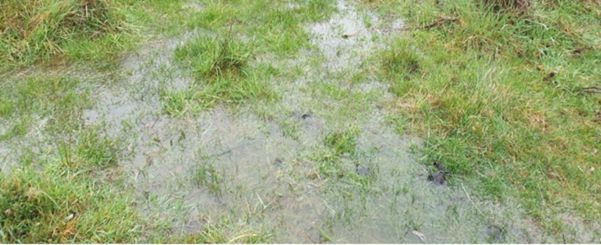Sheep abortions
Kate Rowe, District Veterinary Officer, Agriculture Victoria
There have been several reported sheep abortion cases across North-East Victoria detected through the Victorian Significant Disease Investigation (SDI) Program. The two key infectious diseases identified have been Campylobacteriosis and Listeriosis. Ewes are usually infected through ingestion of the bacteria. Abortions are typically seen in late pregnancy.
Listeria
Listeriosis is a bacteria which can be found in the gut of healthy sheep. In the environment, it can be found in faecal material, soil, water, effluent, and spoiled feed. This bacterium is very hardy and can live in a wide range of temperatures and acidity (pH). The two forms of clinical listeriosis seen in sheep are the abortion and neurological form. The feeding of silage which hasn’t fermented sufficiently and has a pH >5.5 can be a known risk factor for infected animals. However, the most recent cases of listeria related abortions observed locally have been linked to listeria growth in wet, rotting pasture and vegetation as we have seen during the favourable seasonal conditions of the past 12 months.
Treatment and prevention
Unfortunately, listeriosis is not readily treatable since the clinical signs are seen at the end stage of the disease. If faced with an outbreak of listeriosis it is best to identify and remove the source of the outbreak, and in the face of an abortion storm, to move the other pregnant ewes to another paddock. Your veterinarian may consider using antibiotics to minimise losses in the event of an abortion storm. Avoid feeding or access to poor quality silage. Feeding out on fresh, drier areas and minimising excessive wet muddy containment areas is best. Unfortunately, there is no vaccination available to prevent listeria related abortions.
Should I be worried about listeriosis?
Listeriosis is potentially a zoonotic disease so it may be transmitted to humans. At particular risk are pregnant women and people who are immunocompromised. Good hygiene should be used, particularly when handling aborted lambs.
Campylobacter
Campylobacteriosis (or Vibriosis) in sheep is another bacterial disease which causes abortion in ewes. It is one of the major causes of abortion in sheep in Australia. It is most seen in the cool and wetter months of the year. The bacteria can enter your property via healthy animals or can be spread by wild animals such as crows and foxes. After ingesting the infected material, the bacteria spreads to the uterus of pregnant sheep, which causes a placentitis (inflammation of the after birth) and subsequent abortion.
When it is first introduced into a flock it may cause lamb losses of up to 40 per cent. And once it is established in a flock it may continue to cause lamb losses of around 10 per cent, particularly in maiden ewes. Comparing scanning rates with lamb marking percentages can provide an indication as to whether the disease is an issue in a flock.
Treatment and prevention
Like Listeriosis, unfortunately there is no treatment once abortions have started. However, antibiotics may be prescribed by your veterinarian to treat uterine infection in the ewes. In the event of an outbreak, isolating the infected ewes from the main flock and disposing of contaminated aborted materials can help minimise the spread. Always remember to wear appropriate PPE as Campylobacter is a zoonotic disease, causing gastroenteritis in humans. A vaccine is now available for sheep, which costs around $1.60 per dose, requiring two doses at three weeks apart to give initial protection, followed by an annual booster prior to joining.
Rapid investigation is vital in any case of suspect sheep abortion cases. The sooner a diagnosis can be achieved by your veterinarian, the faster treatment or other management practices can be implemented to help minimise the risk of spread in the remaining flock. Ongoing management practices such as vaccination in case of diseases like Campylobacter can be applied to minimise the risk of future outbreaks.
